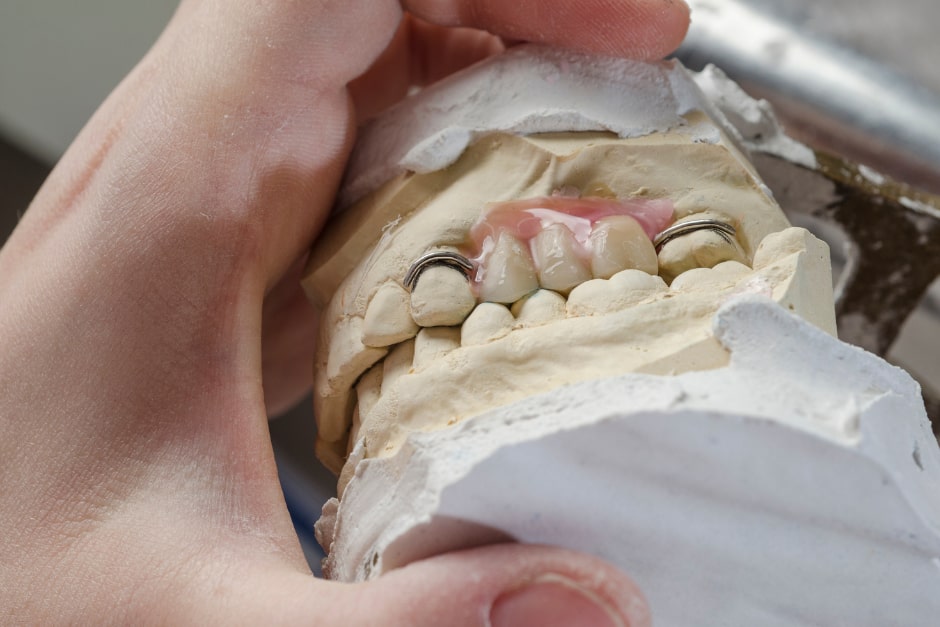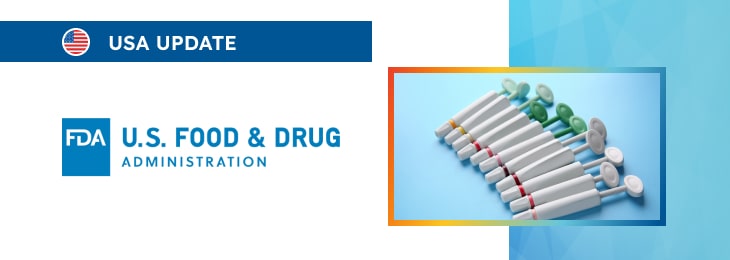The new article describes in detail certain specific aspects pertaining to the regulatory requirements dental composite resin devices should comply with in order to be allowed for marketing and use in the US.

Table of content
The Food and Drug Administration (FDA or Agency), the US regulating authority in the sphere of healthcare products, has published a draft guidance dedicated to dental composite resin devices in the context of premarket notification [510(k)] submissions. Once finalized, the document will describe the applicable regulatory requirements, and also provide additional clarifications and recommendations to be taken into consideration by medical device manufacturers and other parties involved in order to ensure compliance.
At the same time, provisions of the guidance are non-binding in their legal nature, nor are they intended to introduce new rules or impose new obligations. Moreover, the authority explicitly states that an alternative approach could be applied, provided such an approach is in line with the existing legal framework and has been agreed with the authority in advance.
Predicate Comparison
Under the general rule, in the 510(k) process for device review, manufacturers must compare their new device to a legally marketed predicate device to support its substantial equivalence (section 513(1) of the Federal Food, Drug, and Cosmetic Act (FD&C Act); 21 CFR 807.87(f)). This comparison aims to demonstrate how the new device is similar to and different from the predicate.
Side-by-side comparisons, when feasible, are highly recommended to illustrate these similarities and differences effectively.
According to the document, the scope of such comparison should cover
the following aspects:
- Indications for Use
- Principle of Operation
- Mechanism of Action
- Materials (chemical composition of patient-contacting portions)
- Compressive Strength
- Flexural Strength
- Depth of Cure
- Hardness
- Water Absorption
- Water Solubility, and
- Other Relevant Characteristics.

Labeling
As further explained by the FDA, the premarket notification must include proposed labeling in sufficient detail to satisfy the requirements of 21 CFR 807.87(e). This includes proposed labels and labeling that adequately describe the dental composite resin device, its intended use, and directions for use.
As prescription devices, dental composite resins are exempt from the requirement to have adequate directions for lay use under section 502(f)(1) of the FD&C Act, provided the conditions in 21 CFR 801.109 are met. For exemption, the labeling must include adequate information for the use of the prescription device, such as indications, effects, routes, methods, frequency, and duration of administration, and any relevant hazards, contraindications, side effects, and precautions under which licensed practitioners can use the device safely and for its intended purpose (21 CFR 801.109(d)).
Recommended Information for Instructions for Use
According to the guidance, when applicable, the instructions for use should include the following details:
- Compressive strength (MPa),
- Flexural strength (MPa),
- Light intensity (mW/cm²) for curing,
- Wavelength (nm) for curing,
- Depth of cure (mm),
- Curing times for all resin shades (sec),
- Working time (sec),
- Setting time (min),
- Any other properties relevant to the device.
Shelf Life
Another important aspect addressed in the guidance is related to the shelf life of the products in question. In particular, it is stated that the shelf life testing is essential to support the proposed expiration date by evaluating any changes to device performance or functionality over time.
Shelf life studies should assess the critical properties of the device to ensure it performs adequately and consistently throughout its proposed shelf life. Each of the bench tests described in Section III.F should be assessed, and all tests that evaluate design components or characteristics potentially affected by aging should be repeated using aged devices.
Manufacturers should provide a summary of the test methods used for shelf life testing, the results obtained, and the conclusions drawn from these results. If accelerated aging is used for shelf life testing, it is important to specify the aging method and provide a rationale explaining how the results of accelerated aging represent those of real-time aging. Devices should be aged following the currently FDA-recognized version of ASTM F1980 Standard Guide for Accelerated Aging of Sterile Barrier Systems for Medical Devices, and the established environmental parameters to achieve the expiration date should be specified. For dental composite resins, composed of polymeric materials, testing on real-time aged samples is necessary to confirm the accelerated aging study results. This testing should be conducted in parallel with the 510(k) review and clearance, with results documented in the design history file (i.e., complete test reports do not need to be submitted to the FDA).
Biocompatibility
Dental composite resins contain patient-contacting materials that, when used as intended (i.e., contact type and duration), may induce a harmful biological response.
The biocompatibility of all patient-contacting materials in the device should be determined. If the device’s chemical composition, manufacturing, and processing methods are identical to dental composite resins with a history of safe use, previous testing experience or literature references may be used. For some materials, referencing a recognized consensus standard or a Letter of Authorization (LOA) for a device Master File (MAF) may be appropriate. Additional information on using device MAFs can be found on the FDA website.
If no legally marketed predicate device with the same nature of contact and contact duration using the same materials and manufacturing processes can be identified, a biocompatibility evaluation as described in ISO 7405 Dentistry – Evaluation of biocompatibility of medical devices used in dentistry should be conducted. Per FDA’s guidance on ISO 10993-1 “Biological evaluation of medical devices – Part 1: Evaluation and testing within a risk management process”, FDA-recognized consensus standards for a particular device type should be used instead of ISO 10993-1.
The biocompatibility evaluation should explain the relationship between identified biocompatibility risks, the information available to mitigate these risks, and any remaining knowledge gaps. Any biocompatibility testing or other evaluations conducted to mitigate remaining risks should also be identified.
Endpoints for Biocompatibility Evaluation
Per ISO 7405 and ISO 10993-1, dental composite resins are classified as external communicating devices in contact with tissue/bone/dentin for permanent contact duration. The following endpoints should be addressed:
- Cytotoxicity,
- Sensitization,
- Irritation or intracutaneous reactivity,
- Acute systemic toxicity,
- Subacute/subchronic toxicity,
- Genotoxicity.
Conclusion
In summary, the present FDA guidance highlights the most important matters related to the regulatory requirements the products covered by its scope should comply with. The guidance further elaborates on the information to be included in premarket submissions in order to ensure their completeness and reduce the review turnaround time.
How Can RegDesk Help?
RegDesk is an AI-powered Regulatory Information Management System that provides medical device companies with regulatory intelligence for over 120 markets worldwide. It can help you prepare and publish global applications, manage standards, run change assessments, and obtain real-time alerts on regulatory changes through a centralized platform. Global expansion has never been this simple.

